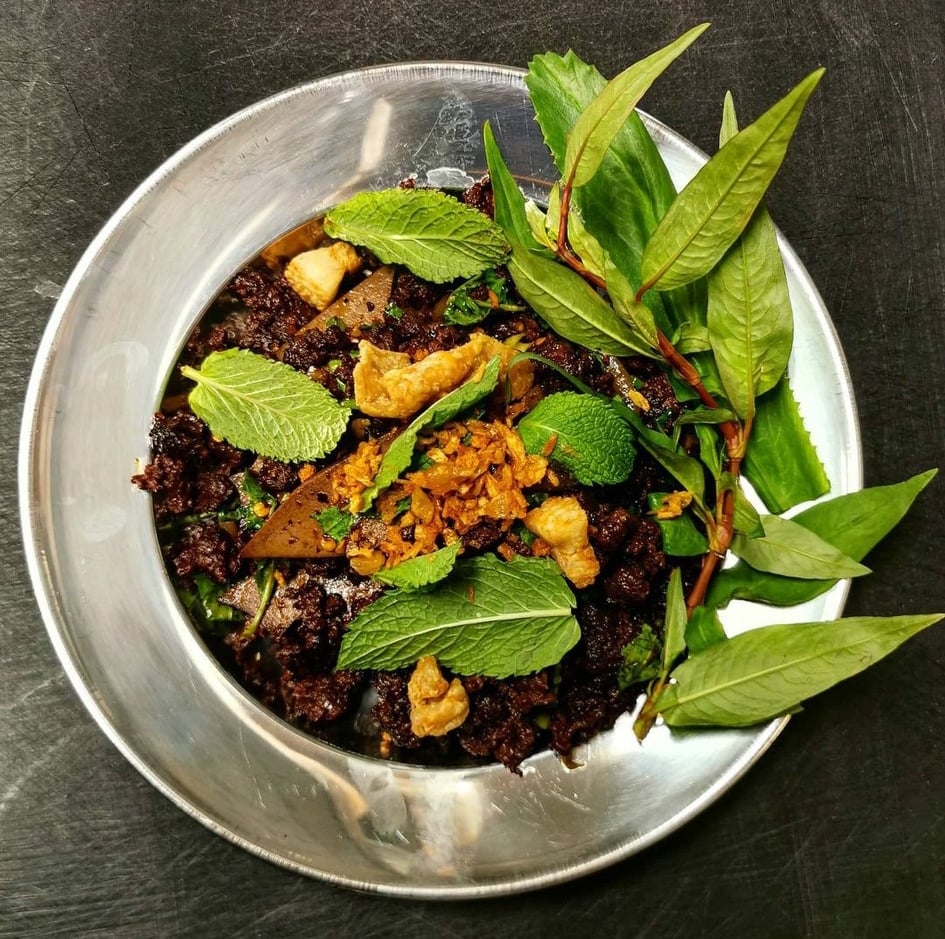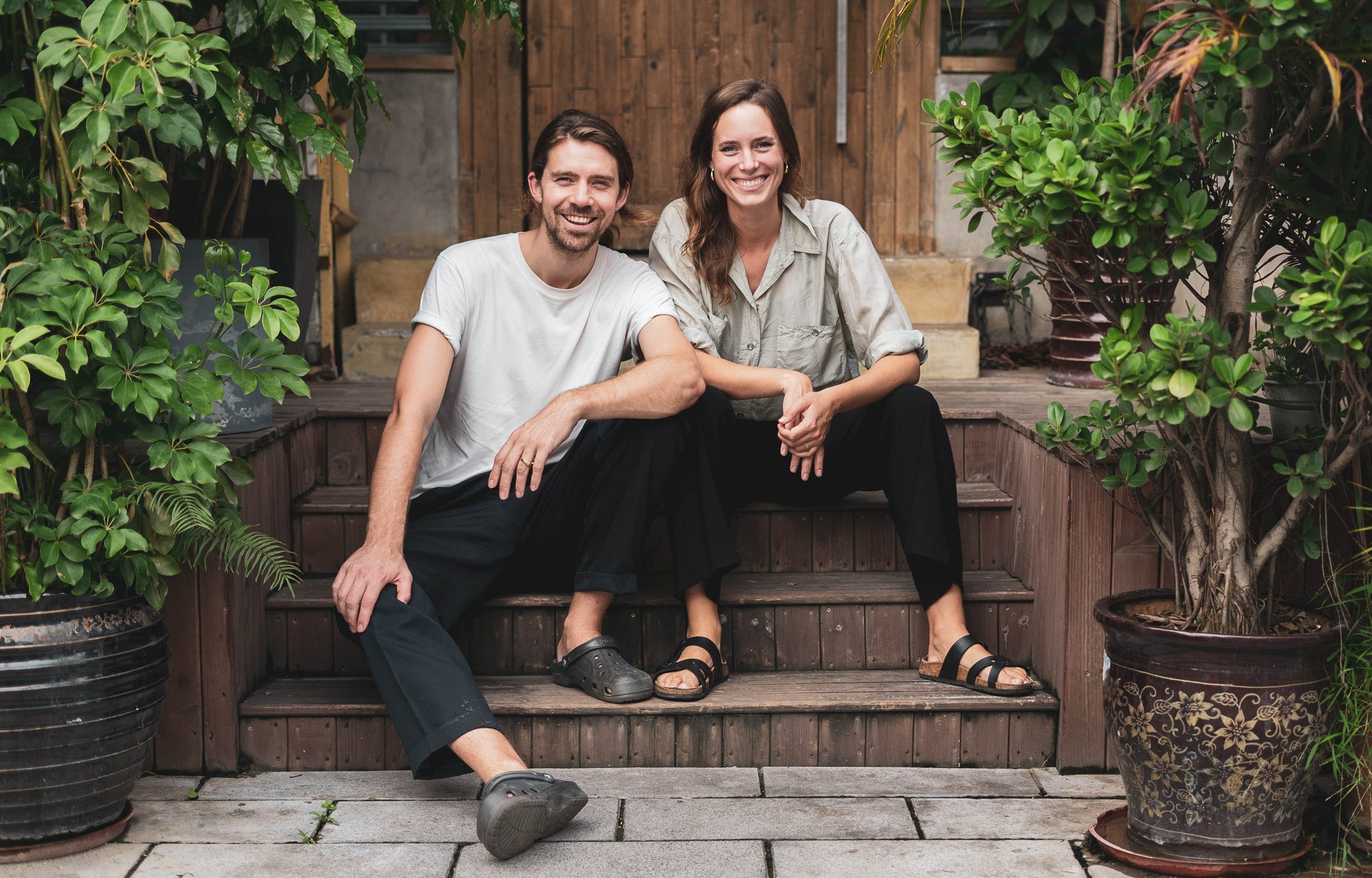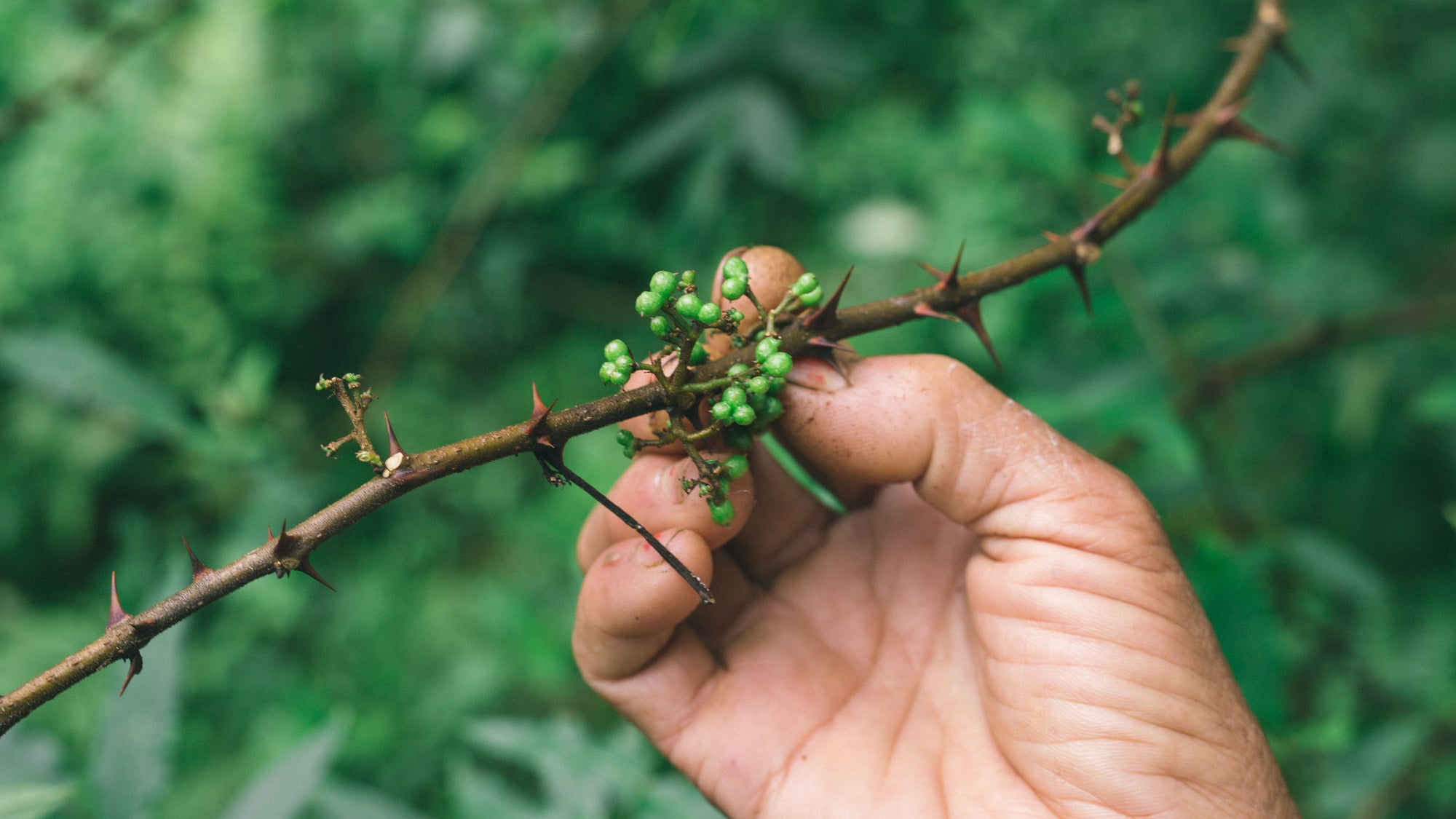Nilas Corneliussen Executive Head Chef of Vila Frantzen in Bangkok laughs wholeheartedly with his first words as we ask our initial question around one of Thailands most famous dishes. Or as it turns out one of Thailands most famous cooking methods.
For us larb has always been one dish. That juicy minced spicy pork with an uplifting array of herbal aromatics and lime supported by a heavy dose of umami in the form of fish sauce. A big time favourite of ours that always seems to satisfy the mind and the belly.
Talking to Nilas it turns out that laab is actually not one dish but thousands. Laap is the way you handle the produce. Larb means that the dish is chopped. Chopped to the max. And how you add flavor to these chopped creations varies vastly from region to region.

The larb spice mix that we have just received comes from Northern Thailand. Laap Muang. Muang refers to Northern Thailand. The cuisine is quite different from the Thai food we find here in Scandinavia which often is from Northeastern Thailand called Isaan. This region neighbors Laos and Cambodia and in many ways also Vietnam. The more we talked to Nilas the clearer the picture became of the different taste palettes of Southeast Asia. We started to understand the fundaments and could weave in our own knowledge and experiences into the equation.
Isaan flavoring is acid, salt, spicy. Many of the dishes are, within the dish itself, balanced with these flavors. Which could be said for many of the cuisines east of Thailand. The flavoring of Northern Thailand is similar but here many of the dishes have their own distinct taste. A dish can lean towards spicy, salty, bitter and acid and combined they make up the meal.
This makes sense. Northern Thailand and the regions capitol Chiang Mai has for centuries been influenced by many different cultures. The proximity to Myanmar, China and the Bay of Bengal has made it a melting pot for cuisines and spices from both the western and eastern parts of Asia. On our quests to Myanmar you could taste the Bengali influence through the layering of flavors and how the food is presented and eaten. And this imprint, after talking to Nilas, seems to reach all the way into Northern Thailand and beyond. Now back to laap. Or was is larb?
The Quest: What makes a good laab?
Nilas laughs: Blood. Lots of blood. And a good spice mix.
Blood might not be the first thing people outside of Thailand think of when they describe a good larb but for Nilas it is essential. His most favourite laap in Laab Dip Muang. This intriguing dish could be interpreted as something like a raw beef sallad. And here blood is what makes the whole dish. He recalls his one of his favourite spots.

Nilas: There is this restaurant in Chiang Mai called Laab Ton. A lunch place where the dude only does laab and a soup of di, as it is called, bile liquid. Bitter. Bitter as ***** but it just works perfectly with laap dip. It is a small dirt road restaurant where he only does these two dishes. He opens at 11. If you are not there at 8, way ahead, there is no way you will get a plate. He always makes the same amount of plates. Always sold out. When he makes this laab he puts his whole being into the laab. His whole soul. He chops and chops and chops. The texture of this laab is indescribable. It becomes like jam as he feeds the meat constantly with a mix of pig and cows blood. The color is like nothing you have ever seen. This is by far my best memory of eating laab.
After a lot of searching on the web we understand why Nilas started the whole conversation the way he did. It seems like the opinions around Laap is as diverse as the dish itself and as always there is not one, but many truths. There are thousands of recipes and interpretations of this dish. And the web is filled with conversations about which one is the one. In many ways this is just how it should be and has been since we, as a human species, started to move. With our movement new ingredients, tools and taste preferences started to mesh and fuse. The difference now is something called the internet where the exchange of ideas is happening in ultra speed and at the same time has the possibility can magnify everything on a global scale.
The Quest: So Nilas. Larb, Laap or Laab?
Nilas: Laab.
The Quest: Laap.
Nilas: Laab.
The Quest: L A A
Nilas: B
The Quest: Laab?!?!
Nilas: Yes. Laab. This is very, very, very important.
The Quest: How come some people say Laap?
Nilas: I don’t know. The translation is Laab.
The Quest: Bu…
Nilas: I mean both kinda work. The worst thing is to put a R in their larb. That is a no no. Irritating to say the least. Or no not irritating. Just that the translation is L A A B.
Well there we go. We would never go against Nilas when it comes to Thai cuisine. But we of course did anyway and continued digging. And of course we should just have listened to Nilas. We will from now on always say Laab. End of discussion. Then again, probably not.
The Quest: Nilas is there something more that we should know about Laab and how would you recommend people use the spice mix to make a somewhat traditional dish?
Nilas look says it all: Adrian c’mon it is a whole world. You could spend a lifetime trying to understand Laab. You just need to go and experience it for yourself. I’ll guide you if you want. To your second question. Use your imagination. Fry, grill, wok. The mix is great. You can use it many ways. But ok, lets try. If you want an easy go to with the spice mix here is how you should do it;
Ingredients:
Pork, Chicken or mushroom
Cooking oil
Laab Muang spice mix
Fish Sauce
Chopped Coriander (Long coriander if you can find it)
Pak Preo (Optional – can be found in many Asian markets)
Garnish:
Chopped coriander
Chopped mint leaves
Fried sliced garlic
Serve with rice and some chopped raw veggies.
How to:
1. Hand chop some chicken, pork or mushroom.
2. Heat your pan to the max. Real, real hot. So it becomes like a wok.
3. Add quite a lot of oil.
4. Add your main ingredient first.
5. Fry out the liquid so it doesn’t cook.
6. In with the spice mix. Remember is it spicy. As it should be.
7. Add fish sauce. This is important. Taste. It is where you balance the salt.
8. Add chopped coriander. Preferably long coriander. And Prak preo if people can find it.
9. Plate and top with chopped coriander, mint and fried slices of garlic.
10. Serve with rice and some cucumber sticks.

Thank you Nilas. Always a pleasure picking your mind and extracting goodies from your vast knowledge base of taste and flavors. It you want to get inspired or just spend some time with the wonderful Nilas check out his instagram here.
Pictures courtesy of Nilas Corneliussen



